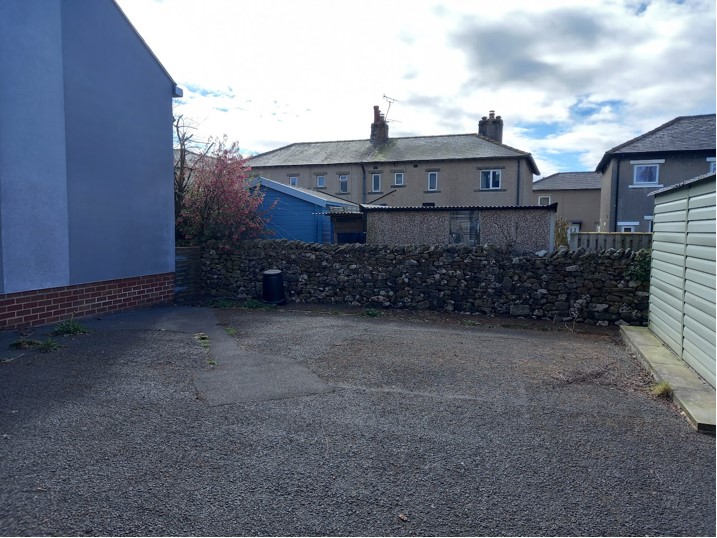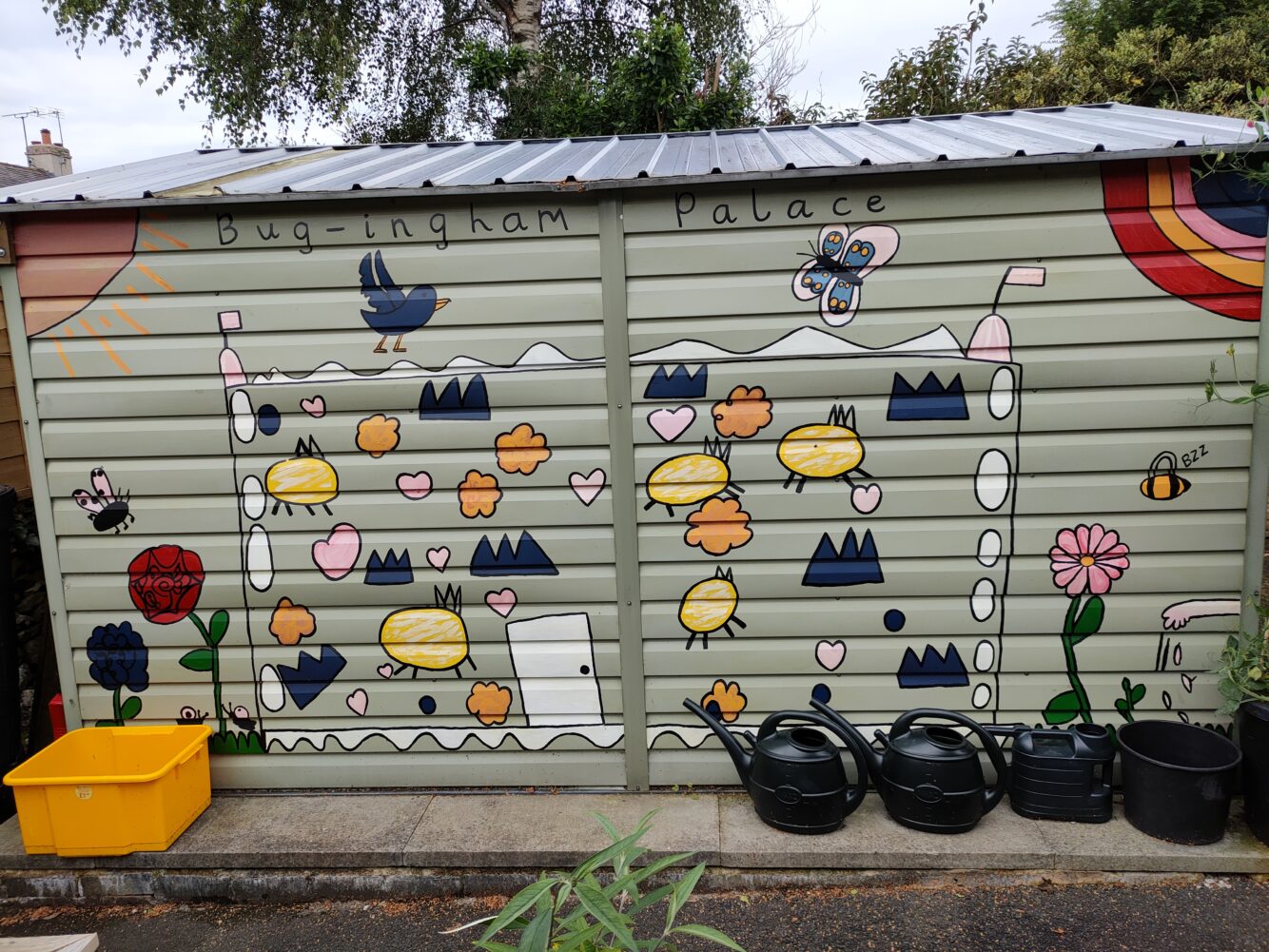St John’s Methodist Church in Settle, North Yorkshire, originally thought they had no land to include in their Eco Church application. They have now reached a gold level in the land section and created a space for people and nature to thrive! Be encouraged and inspired by all that is possible as their Eco team share the journey:

 The Initial Spark
The Initial Spark
When we first completed our Silver Award application, we felt we couldn’t answer the section on ‘Land’ and marked it as ‘Not Applicable’. With 95% of our land being tarmac, we felt we could not use it for anything other than car parking. However, after encouragement from the Eco Church team, who pointed out the possibilities of this space, the Eco Group were energised to take action. We feel that we have certainly gone a long way towards creating spaces that celebrate God’s goodness and bounty in what we had previously seen as a desert.
Action
We focused our attention on a space at the back of the church, which was bare and forlorn, never used. As you see from these pictures, taken in early 2022, it was an uninspiring plot. It was no wonder that we never found a use for it.
Surprisingly, there was an amazing amount of wildflowers around the church building. A congregation member had completed a survey on day 118 of the pandemic as part of an almost daily blog of wildlife in and around Settle. She found 28 different species in bloom and others which were not. See the results alongside beautiful pictures of her findings here. What an amazing abundance in such an unpromising site. How much more could we achieve if we gave God a helping hand?
We noted that this plot was south-facing and benefitted from plenty of sunshine. We needed to create an attractive space to encourage both our congregation and the local community to use it. We also realised that amongst our congregation, there were various talented individuals with artistic, horticulture, and joinery skills. Our caretaker had recently designed and built a community garden in the council’s allotments, available for everyone. He agreed to help us with our new Eco Garden and created planters and seating. The planters were built using purchased timber, whilst the seating and tables were made from donated wooden pallets.
Six months later
Whilst our caretaker was creating the timberwork, we invited the Settle Primary School Green Team to help us with the planting; about twelve pupils came along one morning and planted honeysuckle, clematis, winter jasmine and furnished the newly built Bug Hotel with cones, bamboo canes, and other hidey-holes to welcome our new residents. We asked them questions about the Eco Garden they were planning at their school and shared eco-friendly gardening tips. To brighten up the garden further, we asked the pupils at the school to design a decoration for the side of the very plain shed. The winning entry received a prize, and a congregation member transferred the design onto the shed, as seen in the photo at the top of the page.
We added hanging baskets, installed water butts to gather rain from the shed, and built more recycled furniture. We introduced bird boxes, a Grand Exotic Bug Hotel, and a hedgehog house. A local metal sculptor specially made a bird feeder out of scrap metal.


The Garden Comes To Life
We found that interest was growing once the plants began to grow. The local playgroup visited twice and donated a painted stone caterpillar. The Dementia Forward group, who use our hall every week, planted sunflower seeds indoors and watched them grow weekly until they came to live in the garden. A resident from a nearby supported living accommodation often comes with his carer to water the plants. Rev Tim, our minister, held the Maundy Thursday service around a firepit in the garden. Another evening, a communion service was held when the warmer weather arrived. Two barbecues were enjoyed in the space, and a children’s birthday party moved outside rather than in the hall.


What had been a dead space had come alive!
Apart from being a space where our community could meet socially, we found that our Eco Garden was also used as a quiet reflection and contemplation space. The garden is not overlooked and is away from traffic and the busy daily hustle and bustle. The stained glass cross in the wall of the back of the church is possibly the most striking visual feature in the garden and can be a focal point for prayer. Others use the quietness to observe the wildlife, which we hope will increase with time. We have grown vegetables and built a greenhouse from foraged materials (the first bought one blew down), which is currently burgeoning with tomatoes. The vegetable produce and some sweet peas have been sold at our weekly Coffee Pot to raise money for next year’s seeds.
 The Future
The Future
We plan to increase the seating to 24, still using recycled wood when it becomes available. We’ve constructed a prayer box, which is waiting for the final touches before being installed. The butterfly boxes, donated and painted by children from the playgroup, need weatherproofing before finding a suitable space. The primary school’s Eco Garden has invited us to twin our garden with theirs, which is in a developmental stage. The space in the garden is reaching full capacity, and any further donations of shrubs and small trees will be sited in pots on the gravel area next to the church entrance to brighten this space further. A significant future development, which is in its embryonic stage, is to create a prayer maze. It will take a good deal of forethought, ingenuity and prayer to make the most of our limited space, but we are taking confidence from the success of our first twelve months of work on our Eco Garden.
The Eco Garden has energised and galvanised our church community, probably more than any of the other initiatives introduced by the Eco Group and our leadership team. They have invested themselves into the garden, either by donating plants, gardening tools and money or by giving their time to creating it.
Thank you to the Eco Church team at A Rocha UK for giving us the inspiration and the gentle push we needed to produce such a valuable addition to our church.
With thanks to Philip Taylor and Anne Martin for providing the photos.
You can help more churches to protect and restore nature through a gift to support A Rocha UK’s work here.

